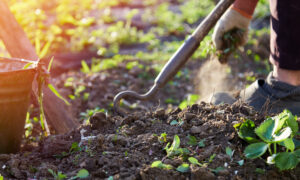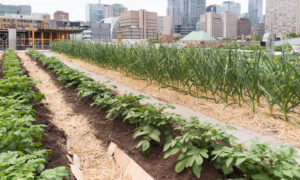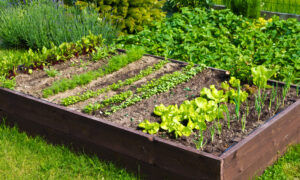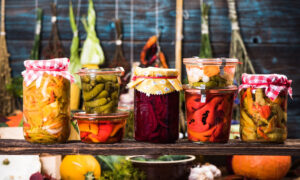Urban gardening is rapidly transforming city landscapes and lifestyles. Once perceived as a hobby limited to those with spacious yards, gardening has found its way into the heart of bustling cities. The evolution of urban gardening reflects a growing desire for green spaces and a personal connection with nature despite the concrete and steel of urban environments. Several elements fuel this trend:
- Health and Wellness: Urban gardening provides a respite from the fast-paced city life, offering mental and physical health benefits. Plant care has been demonstrated to relieve stress, improve your mood, and even enhance physical activity.
- Sustainability Awareness: As environmental awareness grows, urban residents are turning to gardening as a way to reduce their carbon footprint. Growing food locally cuts down on the transportation emissions associated with commercially grown produce.
- Food Security and Quality: There’s an increasing interest in organic and locally sourced foods. Urban gardening allows individuals to control the quality of their food, free from pesticides and chemicals.
- Community Building: Gardening in urban settings often leads to community bonding, whether it’s through shared garden spaces or neighborhood initiatives. It fosters a sense of camaraderie and collective responsibility for the environment.
Challenges and Rewards
Gardening in small, urban spaces comes with its unique set of challenges:
- Space Limitations: The most apparent challenge is the lack of space. Urban dwellers often have to get creative with the little space they have – be it balconies, rooftops, or tiny backyards.
- Environmental Factors: Cities present environmental challenges like pollution, limited soil access, and the heat island effect, which can impact plant growth.
- Regulatory Restrictions: In some urban areas, there might be regulations or restrictions regarding what you can grow or how you can use your outdoor space.
Despite these challenges, the rewards of urban gardening are immense. It offers:
- A Sense of Achievement: Growing your own plants in a constrained environment gives a unique sense of accomplishment.
- Enhanced Living Spaces: Plants add beauty and vitality to urban homes, enhancing living spaces aesthetically and environmentally.
- Learning and Growth: Urban gardening is an ongoing learning experience offering insights into plant care, sustainability, and resourcefulness.
Scope of the Post
In this post, we shall explore three key techniques that make urban gardening feasible and fruitful:
- Vertical Gardening: This method utilizes vertical space efficiently, allowing for a surprising amount of greenery in a small footprint.
- Container Gardening: Containers offer versatility and control, making them ideal for a variety of plants, even in the most constrained spaces.
- Window Box Gardens: These provide a fantastic way to beautify windows while growing herbs, flowers, or small vegetables.
Each technique will offer unique benefits and can be adapted to fit various urban settings. By the end of this post, you’ll have a comprehensive understanding of how to maximize your urban garden space effectively and enjoyably.
In This Article
Understanding the Basics of Small Space Gardening
The Philosophy Behind Urban Gardening
Urban gardening goes beyond just planting in limited spaces; it embodies a philosophy of reconnecting with nature amidst urban landscapes. This movement is driven by a desire to bring a slice of the natural world into the concrete jungle, fostering a sense of balance and tranquility. Key aspects include:
- Mental and Emotional Well-being: Urban gardening is a superb way to escape from the hustle and bustle of city life, providing a peaceful retreat for mental and emotional rejuvenation. The act of nurturing plants can be extremely therapeutic while offering a unique form of stress relief and mental clarity.
- Environmental Stewardship: By engaging in urban gardening, individuals contribute to the greening of their environment. This approach promotes urban biodiversity, improves air quality, and mitigates the urban heat island effect.
- Community and Personal Empowerment: Residents are empowered to take an active role in improving their areas through urban gardening by producing their own food while fostering a sense of independence and community spirit.
Assessing Your Space
Effectively utilizing available space is a cornerstone of successful urban gardening. Here’s how to assess and make the most of various small spaces:
- Balconies and Terraces: Assess the weight capacity and sunlight exposure. Utilize railing planters, hanging baskets, and small containers. Consider the direction the balcony faces (north, south, east, or west) to determine sunlight exposure.
- Windowsills and Ledges: Ideal for smaller plants like herbs or flowers. Ensure safety and stability, especially in windy conditions. South-facing windows generally receive the most sunlight.
- Rooftops: Check access, weight limitations, and exposure to elements. Rooftops can offer full sun exposure, which is great for a variety of plants but requires solutions for wind protection and efficient watering.
- Indoor Spaces: For areas with minimal outdoor space, indoor gardening can be an alternative. Assess areas near windows or use grow lights for plants requiring more light.
Light and Climate Considerations
Understanding light and climate in urban settings is crucial for plant health and growth:
- Sunlight Assessment: Most vegetables and fruits require at least 6 hours of sunlight per day. Leafy greens and some herbs can tolerate partial shade. Observe the patterns of sunlight in your space throughout the day.
- Microclimates: Urban areas can create unique microclimates. Buildings can block or reflect sunlight, and concrete surfaces can retain heat, affecting plant growth.
- Seasonal Changes: Be aware of how seasonal changes affect light and temperature in your space. Some areas may receive full sun in summer but become shaded in winter.
- Wind and Air Quality: Urban areas can be windier, which can dry out plants quickly. Also, consider the impact of urban pollution on plant health and choose hardy varieties when necessary.
In this section, we’ve established the foundational principles and practical considerations for starting an urban garden. By understanding the philosophical underpinnings of urban gardening and learning how to assess and adapt to your specific urban environment, you can create a thriving garden, regardless of space limitations.
Vertical Gardening – Growing Upwards
Introduction to Vertical Gardening
Vertical gardening is an innovative approach to gardening in small spaces, where instead of spreading out, gardens grow up. This method is especially beneficial in urban environments for several reasons:
- Space Efficiency: Vertical gardens maximize limited spaces like walls, balconies, and fences, offering a viable solution for those with minimal horizontal space.
- Aesthetic Appeal: These gardens can transform bland walls and urban areas into lush, living art installations, enhancing the visual appeal of any space.
- Improved Air Quality: By increasing plant coverage in urban areas, vertical gardens contribute to air purification, filtering out pollutants and producing oxygen.
- Microclimate Control: The presence of vertical gardens on walls can help regulate building temperatures, providing a form of insulation against heat in the summer and cold in the winter.
Types of Vertical Gardens
There are numerous ways to create vertical gardens, each suitable for different types of spaces and aesthetic preferences:
- Wall-Mounted Planters: These are fixed to walls and can be used to create a tapestry of plants. They are ideal for herbs, small flowers, and some vegetables.
- Trellises and Climbing Frames: Perfect for climbing plants like ivy, cucumbers, or certain types of beans. They can be standalone structures or attached to walls.
- Hanging Baskets: Suitable for both indoor and outdoor use, hanging baskets can be used to grow a variety of plants, including trailing vines and flowers.
- Tiered Planters: These are freestanding units with multiple levels, allowing for a diverse array of plants in a compact footprint.
Plant Selection
Deciding upon the right plants for a vertical garden depends on the specific conditions of your space and the type of vertical structure:
- Light and Exposure: Assess the amount of sunlight your vertical garden will receive and choose plants accordingly. Sun-loving plants for bright walls and shade-tolerant plants for less exposed areas.
- Weight and Size Considerations: Heavier plants require sturdier structures. Ensure that your vertical garden can support the weight of the soil and mature plants.
- Watering Needs: Plants in vertical gardens may have different watering needs. Drip irrigation or self-watering planters can be effective solutions.
- Plant Types: Consider a mix of ornamental and edible plants. Edibles like lettuce, strawberries, and herbs work well, as do ornamentals like ferns, succulents, and flowering annuals.
DIY Vertical Garden Ideas
Creating your own vertical garden is a rewarding DIY project. Here’s a basic guide:
- Select Your Structure: Decide whether you want to use wall planters, trellis, hanging baskets, or tiered planters. Consider your space and what you want to grow.
- Gather Materials: Depending on your chosen structure, you’ll need basic gardening supplies like pots, soil, and seeds or plants, as well as any necessary hardware for installation.
- Installation: For wall-mounted options, ensure you have the right tools to securely attach planters to the wall. For trellises and freestanding structures, assemble according to instructions, ensuring stability.
- Planting and Care: Once your structure is in place, you can start planting. Keep in mind the individual requirements of each plant and arrange them so that all can access sunlight and water.
Vertical gardening is a versatile and creative way to enjoy gardening in small urban spaces. It offers the opportunity to grow a variety of plants in a way that is both beautiful and functional, turning any small space into a lush green oasis.
Window Box Gardens – Beautifying Urban Views
Introduction to Window Box Gardening
Window box gardening offers a charming and practical solution for urban gardeners seeking to beautify their living spaces. This section delves into the appeal and functionality of window boxes, along with key design considerations.
- Appeal and Functionality:
- Visual Enhancement: Window boxes add a burst of life and color to urban windows, enhancing the aesthetic appeal of the interior and exterior spaces.
- Space Efficiency: They are ideal for those with limited space, allowing gardening on windowsills or railings without requiring additional square footage.
- Accessibility: Easy to access and maintain, window boxes are perfect for those who prefer gardening at a comfortable height.
- Design Considerations:
- Box Selection: Choosing the right size and material (wood, metal, resin) to complement both your window and the architectural style of your building.
- Drainage and Weight: Ensuring proper drainage to avoid waterlogged soil and considering the weight of the box when fully planted is especially important for safety in urban environments.
- Aesthetic Design: Considering color schemes and design layouts that enhance the visual appeal from both inside and outside the window.
Plant Choices for Window Boxes
Choosing the correct plants for your window boxes is crucial for both growth success and visual impact:
- Sunlight and Wind Considerations:
- Analyzing Exposure: Determine the amount of sunlight your window box will receive (full sun, partial shade, full shade) and choose plants accordingly.
- Wind Resilience: In high-rise buildings or windy areas, select plants that can tolerant windy conditions.
- Aesthetic and Growth Compatibility:
- Color and Texture: Choose plants with complementary colors and varied textures for visual interest. Consider seasonal changes in foliage and blooming patterns.
- Growth Habits: Combine upright, trailing, and bushy plants for a balanced and full appearance. Ensure that the growth habits and root systems of the plants are compatible.
Installation and Care
Proper installation and ongoing care are essential for the health and safety of window box gardens:
- Safe Installation:
- Securing the Box: Ensure that the window box is securely fastened to the window sill or railing, considering the weight load, especially after watering.
- Water Drainage: Install with a slight tilt for drainage, or use a box with built-in drainage holes to prevent water accumulation.
- Maintenance:
- Watering: Window boxes may require more frequent watering than ground-level gardens, especially in hot or windy conditions. Consider self-watering window boxes for convenience.
- Feeding: Regularly feed with a suitable fertilizer to maintain plant health, as nutrients can be quickly depleted in the confined space of a window box.
- Pruning and Deadheading: Pruning and deadheading should be done on a regular basis to foster new growth and keep the plant looking tidy.
Window box gardens are a delightful addition to any urban setting, offering a unique opportunity to bring gardening directly to your windowsill. With thoughtful plant selection, proper installation, and dedicated care, they can transform your urban view into a lush, green tableau that changes with the seasons.
Overcoming Urban Gardening Challenges
Urban gardening, while rewarding, comes with its own set of unique challenges. Limited space, varying light conditions, and water management are some of the hurdles urban gardeners often face. In this section, we’ll explore strategies to overcome these challenges effectively.
Space Maximization Strategies
Making the most of limited space is a crucial skill for urban gardeners. Here are some innovative ideas:
- Vertical Layers and Hanging Solutions: Utilize vertical spaces by installing shelves, hanging planters, and vertical garden structures. This approach allows you to grow more in the same footprint.
- Multipurpose Furniture with Gardening Space: Invest in DIY multipurpose furniture that doubles as planters, such as benches with built-in planter boxes or table centers with herb gardens.
- Utilizing Unconventional Spaces: Look beyond traditional spaces. For instance, grow plants on a wall-mounted board with pockets or use railing planters on balconies.
- Stackable and Tiered Planters: These planters allow you to grow multiple plants in a cascading style, maximizing vertical space without the need for large horizontal areas.
Light and Shade Management
In urban environments, managing light and effective shade is key for plant health. Here are techniques to optimize these conditions:
- Reflective Surfaces: Use mirrors or light-colored walls to increase light in shaded areas.
- Rotating Plants: Regularly rotate your plants to ensure they receive even light, promoting uniform growth.
- Artificial Lighting: In particularly dark spaces, consider using grow lights to supplement natural light. LED grow lights are energy-efficient options.
- Choosing Shade-Tolerant Plants: For areas with limited light, select plants that thrive in shade, such as ferns, hostas, or certain herbs like mint and parsley.
Water Conservation
Efficient water management is crucial, especially in small-space gardens. Here’s how to conserve water:
- Drip Irrigation Systems: Installation of a drip irrigation system should improve efficient water usage. Drip systems will deliver water directly to the roots of the plants with minimal waste.
- Self-Watering Planters: Consider using self-watering planters, which have reservoirs that allow plants to absorb water as needed, reducing the frequency of watering.
- Watering at Optimal Times: Water early in the morning or late in the evening to reduce evaporation. Avoid watering in the middle of the day when the sun is at its peak.
- Mulching: Apply a batch of mulch around your plants to retain the soil’s moisture and reduce the need for frequent watering. Mulch also helps suppress weeds.
- Collecting Rainwater: If feasible, set up a system to collect rainwater for garden use. Even in an urban setting, a small rain barrel or a connected series of containers can be effective.
By employing these strategies, urban gardeners can effectively address the common challenges of space, light, and water management. These solutions not only enhance the viability of urban gardening but also contribute to creating sustainable and environmentally friendly gardening practices in the heart of the city.
Engaging with the Urban Gardening Community
Urban gardening is about more than just producing plants; it’s also about developing communities. Engaging with fellow urban gardeners can enrich your gardening experience significantly. This section explores the importance of community in urban gardening and how to tap into local resources and groups.
Learning and Sharing
- The Power of Community Knowledge: Urban gardening communities are treasure troves of localized knowledge. From learning about specific plant varieties that thrive in your city to understanding local pests and diseases, community knowledge is invaluable.
- Sharing Experiences and Troubleshooting: Engaging with a community allows for the sharing of experiences, successes, and failures. It’s a platform for troubleshooting common urban gardening issues, from dealing with limited space to addressing light constraints.
- Community Projects and Initiatives: Participating in community gardening projects can be a rewarding experience. These projects include creating communal garden spaces, organizing seed swaps, or participating in local beautification efforts.
- Educational Workshops and Events: Many gardening communities host workshops and events where experts share their knowledge on topics like composting, vertical gardening, and sustainable practices.
Local Resources and Groups
- Finding Local Gardening Groups: Look for local gardening clubs, community gardens, or urban agriculture organizations. Platforms like social media groups, community bulletin boards, and gardening forums can be great places to start.
- Leveraging Local Nurseries and Garden Centers: Local nurseries often have knowledgeable staff and offer workshops or classes. They are also valuable resources for finding plants and supplies suited to your local climate and urban setting.
- Community Garden Spaces: If you lack space, community gardens offer a plot of land to cultivate. These gardens are also excellent for connecting with fellow gardeners and learning from them.
- Collaborating with Environmental Organizations: Environmental organizations often have initiatives or programs focused on urban greening and gardening. Collaboration with these groups may allow you to gain access to resources, workshops, and community events.
- Utilizing Online Platforms: In today’s digital age, online communities offer a wealth of information and support. Websites, blogs, forums, and social media platforms dedicated to urban gardening are excellent for connecting with other gardeners, sharing experiences, and staying informed about local events.
Engaging with the urban gardening community brings a wealth of benefits, from shared knowledge and resources to a sense of belonging and collective achievement. By learning from and contributing to these communities, urban gardeners can enhance their gardening experience, overcome the unique challenges of urban gardening, and contribute to a greener, more sustainable urban environment.
Conclusion: The Impact of Small Space Gardening
As we conclude our exploration of small-space gardening, it’s important to reflect on the profound impact this practice can have both on individuals and urban environments. This section highlights the personal and environmental benefits of small-space gardening and offers encouragement for readers to embark on their own gardening journeys.
Personal and Environmental Benefits
- Enhancing Personal Well-being:
- Mental Health: Engaging in gardening activities has been shown to reduce stress, anxiety, and depression. The process of nurturing plants provides a sense of accomplishment and can improve overall mood.
- Physical Health: Gardening in small spaces, such as balconies or rooftops, encourages physical activity. It also promotes healthier eating habits when growing your own fruits, vegetables, or herbs.
- Educational Value: Gardening educates individuals on the lifecycle of plants, sustainable practices, and environmental stewardship. It’s an ongoing learning experience that can start from any age.
- Contributing to Urban Biodiversity:
- Creating Green Spaces: Small space gardens add greenery to urban landscapes, contributing to the reduction of the urban heat island effect while also improving air quality.
- Supporting Pollinators: Gardens, even in small spaces, can provide critical habitats for pollinators like bees and butterflies, which are essential for maintaining ecological balance.
- Sustainable Practices: Urban gardens encourage composting, rainwater harvesting, and the use of organic fertilizers, promoting sustainable urban living.
Encouragement to Begin
- Starting with What You Have:
- Emphasize that gardening doesn’t require large spaces or extensive resources. A small balcony, windowsill, or even a sunny spot indoors can be the beginning of a fruitful gardening journey.
- Encourage experimentation. Trial and error are a natural part of gardening, and each failure is a learning opportunity.
- The Joy of the First Harvest:
- Highlight the unparalleled joy and satisfaction of consuming produce you’ve grown yourself. Even a small harvest, like a handful of fresh herbs or a ripe tomato, is a significant achievement.
- Share testimonials or stories of urban gardeners who have experienced the joy and rewards of small-space gardening.
- Resources and Support:
- Remind readers of the abundance of resources available, from online communities to local gardening centers, where they can seek advice, support, and inspiration.
- Encourage joining local urban gardening groups or participating in community gardening initiatives to connect with like-minded individuals.
In conclusion, small-space gardening is a powerful tool for enhancing personal well-being and contributing positively to urban ecosystems. Regardless of your experience level or the size of your space, there is always an opportunity to start gardening. Let this be your invitation to embark on a fulfilling journey of growth, discovery, and connection with nature right in the heart of the city.

Join Our Urban Gardening Community
As we wrap up our comprehensive journey through the world of small-space gardening, we invite you to take an active role in this ever-growing community of urban greenthumbs. Here’s how you can stay connected and further enrich your gardening experience:
Subscribe for Insights and Updates
- Stay Informed: By subscribing, you’ll gain access to a wealth of information tailored specifically for small space and urban gardeners. From the latest gardening trends to practical tips and tricks, our newsletter is a goldmine of valuable insights.
- Regular Updates: Our subscribers receive regular updates featuring in-depth articles, DIY project ideas, and expert advice on a variety of gardening topics.
- Exclusive Content: As a subscriber, you’ll be privy to exclusive content that’s not available to non-subscribers. This step includes special gardening guides, downloadable resources, and early-bird access to events and workshops.
How to Subscribe: Simply fill in your email address at the end of this post and click the ‘Subscribe’ button. It’s that easy to ensure you will never miss out on valuable gardening content.
Share Your Gardening Stories and Tips
- Your Experiences Matter: We believe every gardener has unique insights and experiences. Whether you’re a seasoned urban gardener or just starting, your journey is valuable to the community.
- Inspire and Be Inspired: By sharing your story, you not only get the opportunity to inspire others but also to learn from the feedback and experiences of fellow readers. It’s a beautiful cycle of learning and inspiration.
- Community Engagement: Engaging with our community is a great way to connect with like-minded individuals. Share your successes, challenges, and tips, and be a part of a supportive and enthusiastic network of urban gardeners.
How to Share: Please share your stories and tips by commenting on our posts, participating in our online forums, or tagging us in your social media posts. We often feature interesting stories or innovative tips from our readers in our newsletters.


















